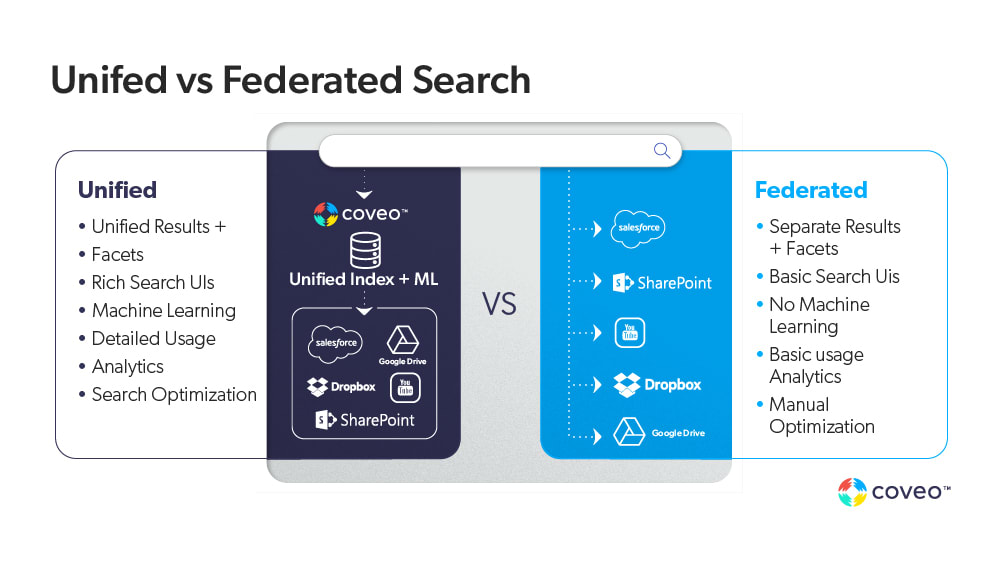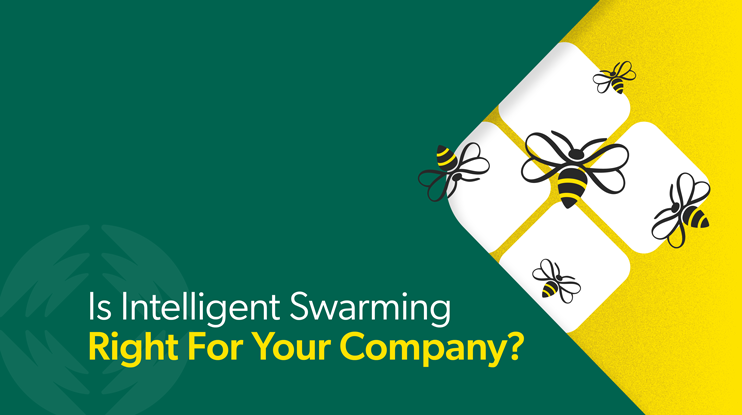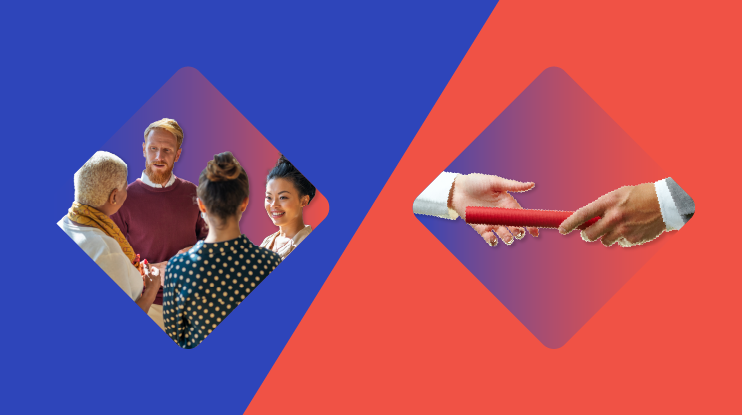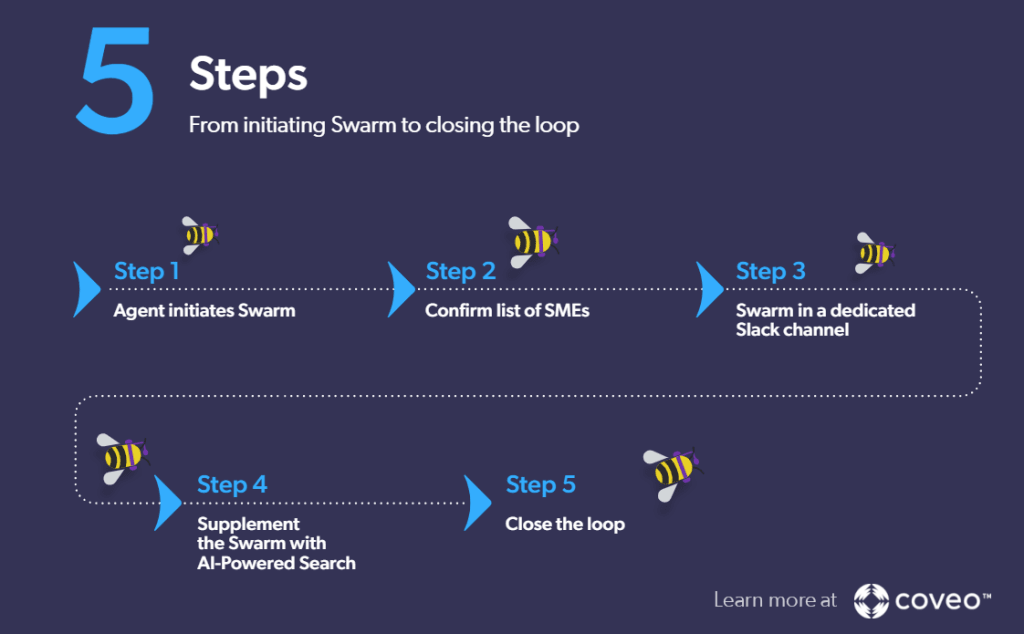What would you do if you had access to a hive mind?
The thing is, you do. Your mobile phone offers a search engine and access to the wider internet. When you need information, it’s muscle memory to whip out your phone and type your query into the search box. You can draw on the information provided to you by millions all over the globe.
You don’t just ask anyone, hoping they’ll have the information you need. Instead, you can go directly to a subject matter expert and get the answer you want, in record time. What’s even more amazing is the astounding level of access everyone has to information these days.
This is the idea behind the Intelligent Swarming℠ methodology when it comes to customer service and support. Let’s dive into the concept: what it is, how it transforms support, and adoption considerations.
What Is Intelligent Swarming?
Coined by the Consortium for Service Innovation, intelligent swarming brings service agents together with experts who can help them resolve a customer’s request or issue. This means a customer only ever interacts with one agent, instead of being passed like a baton from one tier to another.
But the agent isn’t alone in resolving the issue. They have a team composed of coworkers with different skillsets, who brainstorm together to resolve the problem. Then that agent passes that solution on to the customer. And that solution is captured and made available — such as in a knowledge base article or another Knowledge Centered Service solution — to others who might run aground on the same issue.
Why Is a Traditional Tiered Support Model Obsolete?
Creates a Poor Customer Experience
In the traditional tiered support model, support agents are structured in levels. Level 1 is the frontline, those getting the brunt of customers’ questions. When one of those agents can’t answer an inquiry, that question gets escalated to the next tier. Customers are stuck in waiting room limbo, and staff miss out on educational opportunities.
Tiered support is a pretty weak structure in an information ecosystem where customers expect answers yesterday. Not only are they passed from one agent to the next, they often have to repeat themselves, adding to their frustration.
In fact, 33% of consumers stated that waiting on hold and repeating yourself were the most frustrating aspects to customer service. As customer satisfaction dwindles, churn increases and profits plummet.
Creates a Poor Agent Experience
This structure isn’t fun for support agents, either. Greg Oxton, the former executive director of the consortium, said that he’s seen a caste-like system evolve where level 1 agents who’ve amassed enough expertise seek to escape the frontline, feeling that they’ve “earned” the right to not have to interact with customers anymore.
“The idea that anyone in support could ‘earn the right not to have to talk with customers’ (a common attitude in higher tiers) is a ridiculous notion,” he writes in a 2012 blog post for Think HDI. “Customer support is, after all, about supporting customers.”
Relevant Reading: Customer Care Crossroads: Swarming vs Tiered Support
Still, it’s not difficult to see why they might want to escape. An increase in self-service options that help customers resolve known issues themselves, driven by internal knowledge management initiatives and external customer demand. This means your support team is naturally getting the most complex issues simply because those cases are new and haven’t been addressed before.
Added to this is that customer patience wears thin within 10 minutes or less, according to Hubspot.
Thankfully, swarm intelligence is a solution for just such a perfect customer support storm.
How Does Intelligent Swarming Work?
The Consortium defines the Intelligent Swarming model as, ‘collaboration on steroids.’ It’s a framework that enables a support organization to draw on the collective intelligence of the company.
This encourages agents in team collaboration, whether among themselves or with other departments, to resolve requests by matching the request to the person most likely to resolve it.
At Coveo, Intelligent Swarming relies on AI powered search and an integration with Slack. This allows for internal collaboration that, once resolution is achieved, we can capture and turn the conversation into a knowledge base article. This is just one of many areas in customer service and support where generative AI can fit in, as it can help kickstart drafting.
Learn more about combining swarming with Slack:
What Are Some of the Benefits of the Intelligent Swarming Model?
The Intelligent Swarming model has four objectives:
- Perform skill assessment and utilization
- Optimize people’s ability to contribute (create value)
- Increase engagement and loyalty for your customers and your employees
- Improve customer success and realized value through improved problem solving
“Most people work just hard enough not to get fired,” joked the late comedian George Carlin. “And get paid just enough money not to quit.”
Sadly, it’s not just a joke. According to Gallup, more than 70% of the workforce is disengaged from their work or from the business’s overall purpose. The same research shows that true engagement comes from things like a stimulating career path, personal growth, and a sense of community.
Relevant Reading: Quiet Quitting: Why It Doesn’t Need to Happen
The Intelligent Swarming methodology seeks to create that community by developing a collaborative environment. A big tenet of the Intelligent Swarming model is developing an ‘opt-in’ mentality, where knowledge workers choose to share knowledge they’re passionate about, or learn more on what they’re interested in. This is accomplished by creating ‘profiles’ that describe a participant’s expertise and interests, allowing others in the ‘swarm’ to pinpoint who they need to speak with to find a customer resolution on the first touch.
What’s more, the Intelligent Swarming model works best on novel questions that haven’t been resolved before.
What are the Biggest Challenges in Adopting an Intelligent Swarming Model?
There are four critical success factors for implementing the Intelligent Swarming method:
- Developing a culture of collaboration. The tiered structure is ingrained. Switching to a collaboration model isn’t like flicking a light switch; for many, this is a transformation that will take time and effort.
- Alignment to brand purpose and company values. This ties back to the problem of engagement, and more specifically, nurturing clear and streamlined communication between groups.
- Establishing new indicators of organization health and value creation. An Intelligent Swarming model moves companies away and beyond traditional metrics. What success looks like will vary, depending on overall goals.
- Transformation of management’s role. One of the biggest changes is breaking traditional hierarchical structures. In an intelligent swarm, those traditionally in a management role move closer to being coaches.
How to Swarm the Knowledge You Already Have
Search Early, Search Often
As an increasing number of companies transition to either hybrid or remote offices, employee swarming is an emerging best practice for virtual workplace collaboration. Introducing chat messaging into enterprise search results presents a whole new type of content that needs to be considered carefully and displayed a little differently.
The promise of enterprise search is that you can search everything. This requires connectors to the data sources you want to index — such as Dropbox, Salesforce, YouTube, Jira, Google Drive, Twitter and many more — and a way to display that content to the right person at the right time using powerful AI technologies.

All these sources of information have something in common. Not their content, of course, but rather the fact that they are self-contained. That means, in that each are relevant individually and can live by themselves in a search page. These types of search results don’t rely on each other to be relevant and useful.
In other words, you don’t need a second YouTube video to understand another.
Indexing Conversational Content
On the other hand, conversational documents — and more specifically Slack messages — depend on each other. This is because they are part of a conversation.
To understand a message and its impact, you need to understand the context around it. This includes where the message is from, who’s talking to whom, for which project, when was that said, etc.
This represents some challenges for adding it to an enterprise search engine, which we discuss in more detail in Should You Index Slack? 4 Considerations Before Indexing Conversational Content.
Dig Deeper
No matter where you are on yourKCS journey, you can find value in the Intelligent Swarming method. Interested in learning more?
Bring your questions and join the conversation with Matt Seaman, Executive Director at the Consortium for Service Innovation, and Patrick Martin, VP of Customer Support at Coveo, in a roundtable discussion about best practices with examples from the field.
*KCS® and Intelligent Swarming℠ are service marks ofthe Consortium for Service Innovation™





